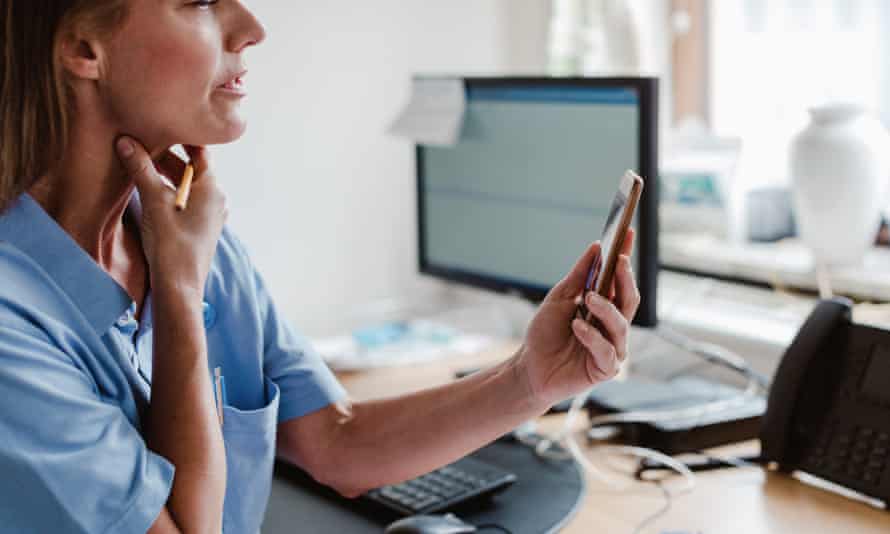
While the Covid pandemic pushed the UK’s health and social care sectors to the brink, it became the catalyst for transformation of these areas on an unprecedented scale. Digital adoption may have been a knee-jerk response to the urgent need to free up capacity in acute hospitals and reduce the risk of infection transmission in NHS settings, but it has transformed patient care, supported staff in working remotely, and kept vital services running.
As a result of Covid forcing through innovations in treatments and patient care, the pandemic has helped the healthcare sector make up lost ground, accelerating the rate of digital transformation in health and social care by up to five years, according to a recent study by the Centre for Economics and Business Research (CEBR) and Virgin Media O2 Business.
Now, as the NHS strives to return to something like normality, the challenge will be maintaining the momentum of this digital revolution in a sector dogged by long-running battles with legacy technology. Historically, new digital projects have always been difficult to implement within the NHS, impeded by concerns over interoperability and security and budgetary constraints.
“It normally takes a huge amount of time to get a new digital healthcare project off the ground,” explains Graham Walsh, chief clinical information officer at the Calderdale and Huddersfield NHS hospital trust and a practising knee surgeon. “With Covid, we had no choice. We were working remotely, we couldn’t see patients face to face, so we had to find solutions very quickly. And because of that, patients also adapted and adopted and saw the benefits really quickly.”
Digital transformation has also facilitated the virtual management of patient care through remote monitoring. For example, Walsh’s patients can go home on day one following knee replacement surgery with a wearable sensor that monitors their range of motion, guides them through exercises, and logs their progress, enabling them to be self-directed in their rehabilitation.
He says: “As a result, the physios no longer have to see every surgical patient; they just see the patients they need to see, which frees up clinical resources and hospital beds, and allows us to treat more patients.”

Remote monitoring is also being used to improve patient care for long-term conditions, such as inflammatory bowel disease, using smartphone-based technology. At Northern Lincolnshire and Goole NHS foundation trust, where cardiologists are piloting digital devices to monitor their patients at home, the proportion of virtual work being done, including consultations and monitoring, has risen from 10% a year ago to more than 50%.
Technology has helped ease some of the staffing pressures that threatened to overwhelm patient services during the pandemic. Many conditions that don’t require surgery can be managed with information and exercises facilitated by digital technology, removing clinical staff from the process. Digital solutions also improved work-from-home capabilities for staff, and provided the whole workforce, both frontline and back office, with greater flexibility during the most critical times of the pandemic.
For Mike Smith, director of large enterprise and public sector at Virgin Media O2 Business, it goes beyond technology and connectivity – it’s about better patient care. “That could mean the difference between someone receiving the correct diagnosis in time, or health workers being able to access the information they need to save a life,” he says.
A lasting legacy of the pandemic has been its impact on patient waiting times for elective and non-acute procedures and treatments. “The anger these patients feel isn’t so much about a long wait, but the not knowing,” says Walsh. “We’ve used technology to create a database that prioritises them according to their clinical needs, and also keeps them informed.”
However, if the NHS, and health and social care organisations, are to build on what has been achieved in the past two years, there will need to be a more structured approach to shaping digital transformation around an even greater focus on how better patient outcomes can be maintained and improved.

Felix Peckitt, a senior business consultant in BearingPoint’s healthcare practice, says: “Patients interact with healthcare systems at different touchpoints throughout their journey; calling their GP to get an appointment, attending A&E, picking up a prescription; activities that use different digital tools, which may not always talk to each other.
“Patients also interact with many different hospitals and providers to get help; why should their systems not interact too? Connected systems can also help reveal patients who have got lost in the cracks, pinballing from service to service, without getting the support they need. Understanding this helps ensure that the digital transformation is patient-centred.”
Unusable systems are being mothballed, while interoperability between digital healthcare systems has improved, building the foundations for technology to connect people’s homes to hospitals. This opens the door to more sophisticated technologies and analysis powered by advances in artificial intelligence and the computational capability of the cloud.
For a better connected and more unified health sector, investment must be prioritised in digitising routine and high-volume processes that are high-impact and predictable, says Peckitt. “This frees up clinical professionals’ time to do what they do best, spending more time with patients and doing value-adding work.”
While the NHS had seen rapid digitalisation recently, this hasn’t always been the case in partner organisations critical to patient care. There is a need for an integrated patient pathway, to ensure that key partners, such as care homes and palliative care providers, are part of the same digital journey.
But innovation in healthcare across the UK is not always an even playing field, and organisations adopt digital technology at different rates. Creating greater uniformity will require greater investment in connectivity, collaboration, and technologies that enable equitable productivity and effectiveness for staff, and even better outcomes for patients across all areas of health and social care.
It’s time to expect more
How can health organisations benefit from a new era of better patient outcomes? Get insights into the digital health revolution from Virgin Media O2 Business
